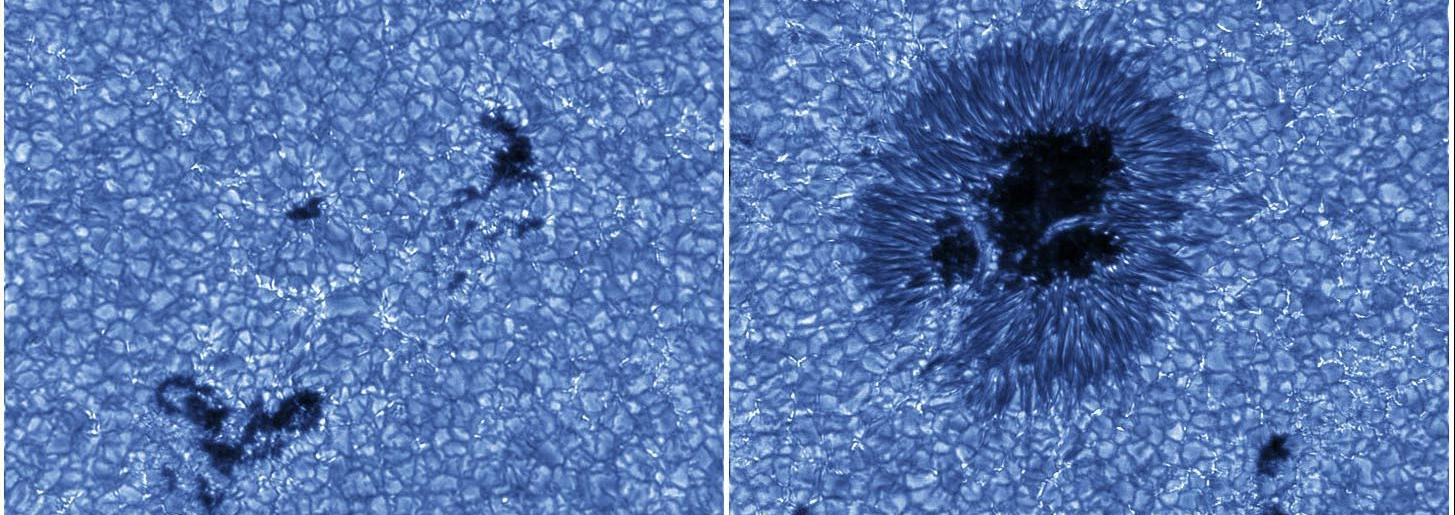BIC


Blue Imaging Channel
High-cadence imaging provides important context information for the GFPI observations. Small-scale magnetic features are more more easily detected in particular wavelength regions, e.g., the Fraunhofer G-band. Furthermore, the broad Calcium H and K lines offer chromospheric diagnostics.
In 2016, new (faster) cameras will be integrated.
All BIC data (i.e., raw data and high-level data products) are stored in the GREGOR archive at AIP
Two CCD cameras (pco.4000 and pco.sensicam) can be used in the BIC of the GFPI depending on the availability of the GREGOR/VTT facility cameras. Three interference filters (Ca II H λ396.8 nm, G-band λ430.7 nm, and blue continuum λ450.8 nm) are available. Recently, MPS contributed a 0.1-nanometer-wide Ca II H λ396.8 nm interference filter of the Sunrise mission. The maximum FOV of the pco.4000 CCD cameras is limited to 75″ × 93″ (2160 × 2672 pixel) because of dichroic pentaprism splitting the light between GFPI and BIC. The FOV of the pco.sensicam CCD camera is much smaller 34″ × 26″ (1376 × 1040 pixel) but the data acquisition rate is much higher (eight vs. three frames per second). However, in both cases post-facto image restoration is feasible (Knox-Thompson, speckle masking imaging, and multi-frame blind deconvolution)